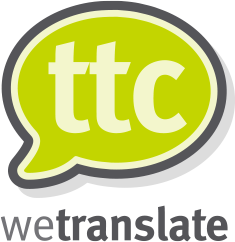TRANSLATION
How to Choose a CMS for Your Multilingual Website
TRANSLATION
How to Choose a CMS for Your Multilingual Website
In today’s global economy, being able to cater to different markets is essential and provides a growth potential. Expanding your business globally has endless opportunities but your business should be able to communicate with the target audiences in their languages. One of the most common ways to engage with your overseas clients/potential clients is that you have a multilingual website which can be achieved with a CMS (Content Management System).
But how can you maintain and organise your multilingual content of your website effectively? The answer lies in choosing the right CMS. Among popular examples there are WordPress, Kentico, Drupal, Sitecore, Magento, Joomla and more. Whether you are just starting with a new CMS or plan to switch to a new one, it’s good practice to find out what these CMS are offering before you make a decision. We have listed 5 key points to take into account when choosing the CMS which will meet the requirements for your multilingual website.


Abigail Hatter
Managing Director
1. Multilingual Content Management
Your CMS should be able to display and edit any language effectively for you to maintain a consistent brand image across all content. This is especially important if you plan to expand your business into different target countries and if the languages have different alphabets and right-to-left orientation such as Arabic or Hebrew. It’s important that your customers/potential customers “feel at home” in your website so your CMS should be able display their language properly.
2. Formatting Flexibility for Different Target Countries
Besides displaying different languages, there are also cultural and country-specific aspects to consider. Different cultures use different currencies and date/time formats – some may even use different calendars. Your CMS should be able to handle these to localise your content effectively.
3. Source Language Flexibility
If your source content isn’t necessarily in one language, your CMS should be able to handle it in different languages. This may be the case, for example, if your main content is English but you also have blogs written for a target country in their native language.
4. API Functionality
A CMS with an API functionality will save you time and money as it is the most efficient way to transfer content for translation. It helps you move the content to the translation tool without any file exchange and without the need of altering your original website. You should be able to transfer files and send and receive scheduled batches for translation.
5. Multi-Platform Functionality
Today’s digital age allows us to access the internet in any place and in various platform such as mobile phones and tablets. It’s important that your multilingual website displays properly in these platforms. For example, your CMS should be able to convert your website into a mobile version whilst keeping all or most of the features the desktop version offers so that it is user-friendly and appealing to the eye.
Ready to make a decision and want to know more about Multilingual CMS? We have solutions for translating your CMS in the most effective ways.
How can we help you?
Book a 15-minute call with our MD Abi Hatter.

Key benefits of working with us
- Fit for purpose translations
- Avoiding unnecessary costs, preventing excessive charges
- One-stop solutions to save you time
- Free consultation based on 30 years of industry experience
- Professional indemnity insurance to give you peace of mind

